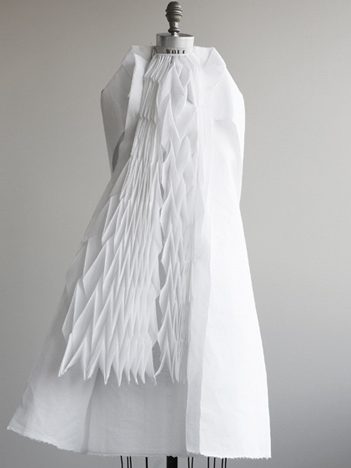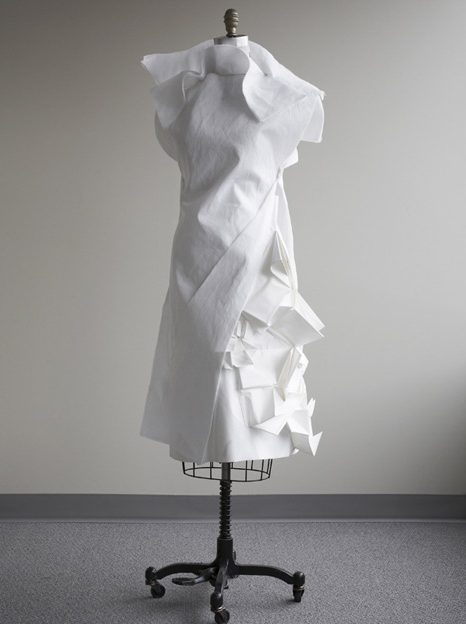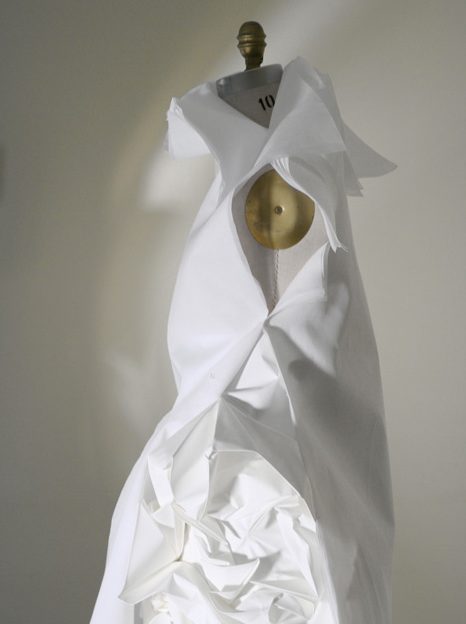by Helen Yu
Imbedded in the origami-style folds of these dresses are pneumatic pumps that fill the garments with air. The pumps, activated by proximity, sound, and touch, trigger intricate expansions and contractions in the folds of the dresses, as if the garments themselves are alive.
Read more about Ying Gao’s Walking City on her website and in this Dezeen article.



Ying Gao breathes life into her works with intricate rises and falls, expansions and contractions. By incorporating motions found in the nature into her garments, Ying Gao is able to replicate nature’s response to its environment.
The garments act as an extension of the wearer’s expressions and emotions. Looking at the first dress, when a stranger is too close, the dress inflates, as if to protect the wearer. This reaction to proximity is reminiscent of defense responses found hedgehogs and puffer fish (can we call this textile adaptation?). Imagine this garment technology in our current pandemic. If people were not social distancing, the garment could inflate as a warning or defense for the user.
In a world that is looking to be more conscious of people’s comfort levels (physical and emotional), Ying Gao’s “Walking City” revolutionizes the way in which we respect, understand, and interact with each other. Seeing your interactions manifested onto someone’s clothing opens your eyes to how others are affected and how you affect others.
Leave a Reply
You must be logged in to post a comment.